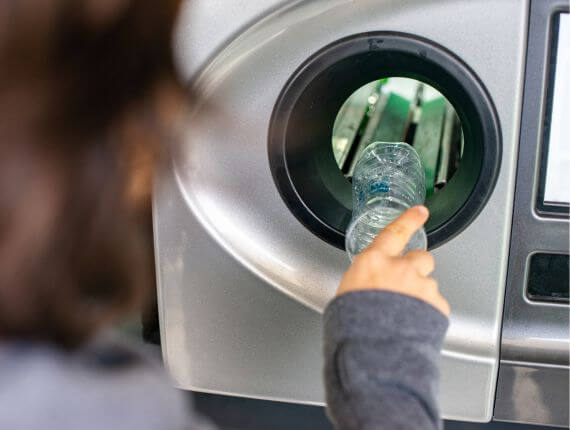Environmental Education at Points of Sale: How to Support Consumers in the Deposit System?

Starting January 1, 2025, Poland will implement a deposit return system for plastic bottles, glass bottles, and cans. The primary goal is to reduce waste, reuse materials, and protect the environment. However, the system itself is not enough — it’s equally important that consumers know how to use it and why it’s worth doing so.
How can we effectively educate customers about the deposit system? What tools and practices work best? Below, we present concrete answers.
What Has Changed Since the Introduction of the Deposit System in Poland?
According to the new law, as of January 1, 2025, a nationwide deposit system has been introduced in Poland, covering:
- Plastic bottles up to 3 liters (with caps),
- Reusable glass bottles up to 1.5 liters,
- Aluminum cans up to 1 liter.
What was the most crucial change for consumers?
No receipt is required for returns. This allows packaging to be returned at any chosen collection point — without showing proof of purchase.
What was the most important change for producers and retailers?
Larger stores (over 200 m²) must accept packaging and return deposits, while smaller outlets can join voluntarily. Since consumers interact with the system mainly at points of sale, education efforts should focus on those areas.
How to Educate Consumers About the Deposit System?
1. Visible Signage and Information at Shelves
Each deposit-covered package should be marked. But product labelling alone isn’t enough. The store should:
- Place notices near shelves (“Deposit product – remember to return it”),
- Use pictograms and colour coding to make identifying packaging easier,
- Indicate the deposit amount (e.g., 0.50 PLN).
This helps customers easily recognise deposit items and understand that the deposit is not a cost, but a temporary deposit.
2. Instructions at Reverse Vending Machines
Reverse vending machines are the most convenient and intuitive solution for returns. However, for many consumers, they are still unfamiliar, so it’s worth including:
- Clear step-by-step instructions (preferably graphical),
- Tailored communication for different age groups (e.g., seniors, children),
- Clear information about how the deposit is refunded (e.g., in cash).
According to Exorigo-Upos, modern vending machines integrated with point-of-sale systems or loyalty apps speed up the process and increase consumer satisfaction.
3. Staff Training
Store employees need to understand how the deposit system works so they can answer questions and resolve doubts. Recommended actions include:
- Short training sessions,
- Infographics in staff areas,
- Clear procedures for complaints or machine malfunctions.
Engaged staff are the best form of “live” education.
4. Motivating, Not Just Informing
Information alone isn’t enough — effective education campaigns also rely on positive motivation to encourage consumers to return packaging. What can work well?
- Loyalty programs – consumers earn points for returning packaging.
- Gamification – e.g., “Return 10 packages = 1 entry in an eco-lottery.”
5. Multi-Channel Communication – Not Just in Stores
While stores are the central place for education, it’s worth expanding efforts through:
- Websites and mobile apps – for FAQs, tutorials, and updates.
- Social media – e.g., short videos showing how to use the vending machine.
- Printed materials – leaflets, posters, product labels.
- Local awareness campaigns – joint efforts with municipalities or schools.
The Exorigo-Upos website already features ready-made solutions for integrating vending machines with store systems.
Long-Term Effects of In-Store Education
When implemented well (and in a way that appeals to the consumer), in-store education can yield gratifying results, including:
- Higher return rates for packaging,
- Reduction in environmental waste,
- Strengthened customer loyalty to the brand,
- A positive company image as a socially responsible business.
Moreover, consumers learn that they can directly impact environmental protection, which is the foundation of any social change.

